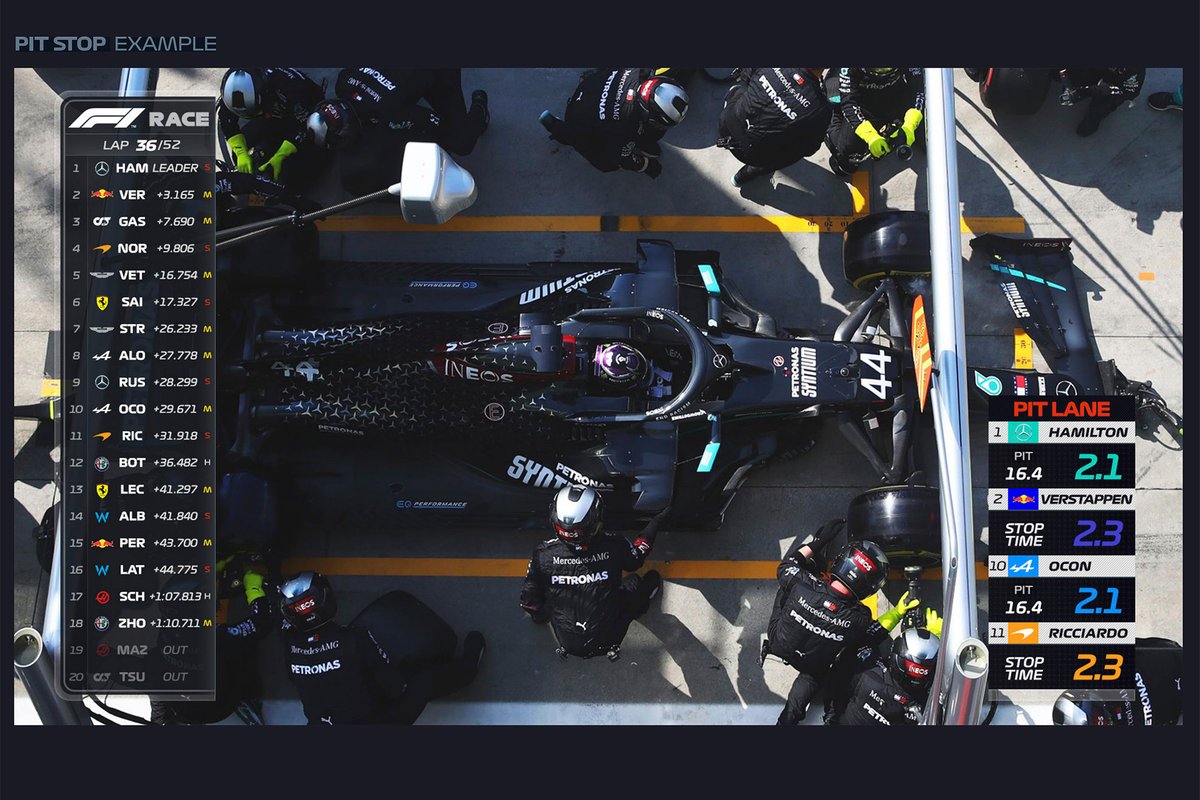
F1's broadcast chiefs are always eager to push the boundaries when it comes to make the show look even better on the small screen, be it through new ideas, improved presentation or adopting the latest innovations.
So as F1 enters a new rules era in 2022 with the Bahrain Grand Prix, the season ahead will see the sport lift its game once more in a bit to improve the spectacle.
Here's a summary of the key changes that TV viewers will see in 2022.
Helmet cam in race

Following successful trials in several practice sessions last year, F1 will be expanding the use of its helmet cam for 2022.
While it was only used in practice sessions last year, the drivers' eye view will be unleashed in races for the first time this season, with plans to run it in up to four cars per event.
F1's director of broadcast and media Dean Locke told Motorsport.com about helmet cam: "We were really happy with the results last year, and now we are going to run it in qualifying and the races.
"I think we've got to test a bit with how we use that, because sometimes shorter is better for some of those shots."
At the moment, due to FIA homologation requirements, the helmet cam can currently only be used in Bell helmets, but work is going on to get it running in other manufacturers.
F1 has been particularly eager to get the helmet cam working well, because the camera technology can then be applied to work in unique areas of the car to bring unique footage.
"We thought that once we cracked the helmet cam, we can use it everywhere," added Locke.
"We're looking at potentially cameras on the rear light, or ones we've used in the past – like a mirror camera or even in the footwells."
HDR

For those channels able to do so, F1 will be broadcast in HDR for the whole season in 2022.
HDR (high dynamic range) has become increasingly common in sports coverage, and offers the highest quality of TV picture on both traditional television screens but also other devices like phones and tablets.
Locke said: "We're doing HDR, which we trialled last year and did some testing. We were really happy with the results and especially these races under lights, it looks really good. That's a big step forward, really."
New camera angles

Formula 1 is always up for trying new things with its camera angles, so it will again be offering some different views in 2022 from both trackside and on board.
Locke added: "We have a really nice new low nose on-board, where you don't see much of the front wing now. That really gives a good sense of speed, which we're always trying to do.
"We've also changed some of the positions of our track cameras slightly. People think we just turn up at races and have the same camera positions, but actually there are differences each year."
Beyond the cameras being used for race coverage, F1 will have access to three high-motion cameras at race weekends, whereas last year it was restricted to just one.
There will also be two roaming cameras to help bring footage from unexpected moments out on track.
Locke said: "If we get a car broken down, then we're on the radio and say: get over there!
"We have had some really great shots from that, like when a driver is reacting next to his broken down car
"But cameras everywhere is the thing. We will have more cameras on the pit wall. We had one or two last year, but we're hoping to cover all the teams in 2022."
Drone experiments

While drone camera footage has transformed many action sports – from skiing to rallying – it has not been used extensively in Formula 1.
Teams have sometimes utilised drones on filming days, and F1 did evaluate one during one of the COVID races in Austria, but the preference for overhead shots remains to use helicopters.
The chief reason for that has been safety – with some challenges posed by the risk of drones falling out of the sky.
Locke said: "If you look at things like downhill skiing, or anything like that, they're following one skier.
"If that thing drops or something happens to that drone, it's not really an issue.
"They don't have a lot of crowd on the top of the mountains: they are at the bottom. So it works quite well for them.
"If we are following one car, there's normally another car behind it, which gives us some sort of fundamental problems. Plus, I think, the other part is our cars are going 200mph. So 200 mph and a drone isn't very good!"
But F1 thinks that that the latest drone tech is close to be ready for live coverage at grands prix weekends.
Locke explained: "We've been keeping a close eye on drones. That's not necessarily to replicate a helicopter, because it's actually a different shot.
"We're hoping to bring them in halfway towards the end of the season, with some new unique shots that you can only see with drones."
Key to giving the green light will be in ensuring the battery life is long enough, plus it can guarantee broadcasting footage in a high enough definition so it blends in seamlessly with the international feed.
New graphics

One other obvious change already seen this weekend is the television graphics, which FOM has revamped extensively for this season.
They are given much more prominence and space on screen than before, now situation below the F1 logo which has been moved to the top left of the screen
Locke said: "They are new look and they are very different to what we've had before from a look and feel concept. They are bold, they're a bit fresher, a bit younger. They take a lot of influence from digital and film."







